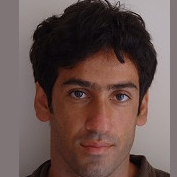Pansharpening and Beyond in the Deep Learning Era
A special issue of Remote Sensing (ISSN 2072-4292). This special issue belongs to the section "Earth Observation Data".
Deadline for manuscript submissions: closed (15 November 2023) | Viewed by 8314
Special Issue Editors
Interests: image segmentation and classification; despeckling; pansharpening; data fusion; deep learning
Special Issues, Collections and Topics in MDPI journals
Interests: image segmentation; data fusion; despeckling; super-resolution; pansharpening; deep learning
Interests: data fusion; despeckling; super-resolution; pansharpening; deep learning
Special Issues, Collections and Topics in MDPI journals
Special Issue Information
Dear Colleagues,
Recently, space agencies and private companies have been deploying in orbit numerous observation satellites with unprecedented temporal, spatial and spectral capabilities. End users are flooded with a variety of images of diverse nature (e.g., optical vs. SAR, high-resolution vs. wide-coverage, mono- vs. multi-spectral), often in regular time series. Consequently, data fusion is becoming a key asset in remote sensing, enabling cross-sensor/modality, cross-resolution or cross-temporal analysis and information extraction.
Multiresolution (MR) fusion is a popular task where two images of the same scene with different resolutions and complementary features are merged with the aim of synthesizing a higher-quality image that reproduces all bands of interest at the highest possible resolution. There are many different cases of MR fusion, such as hyper-/multi-spectral fusion, pansharpening, SAR/optical or SAR/SAR fusion, and so forth, and new fusion problems arise each time a new Earth observation satellite is put in orbit. In addition, new (or renovated) challenging questions are carried by the big wave of deep learning—for example:
- What is the right volume of training data to ensure good generalization properties?
- What is a good loss for training?·
- How should data be labelled for training purposes?·
- How can a limited computational burden be achieved at inference time?·
- How can the quality of the fused products be objectively assessed?
This Special Issue aims to report the latest advances and trends concerning the solution of MR fusion problems. Papers of both theoretical and applicative nature are welcome.
Major topics of interest include but are not limited to:
- Pansharpening.
- Hyper-spectral/multi-spectral image fusion.
- Optical or SAR image super-resolution.
- Multitemporal fusion.
- Cross-sensor multi-resolution fusion.
- Pansharpening and super-resolution assessment.
Dr. Giuseppe Scarpa
Dr. Antonio Mazza
Dr. Sergio Vitale
Guest Editors
Manuscript Submission Information
Manuscripts should be submitted online at www.mdpi.com by registering and logging in to this website. Once you are registered, click here to go to the submission form. Manuscripts can be submitted until the deadline. All submissions that pass pre-check are peer-reviewed. Accepted papers will be published continuously in the journal (as soon as accepted) and will be listed together on the special issue website. Research articles, review articles as well as short communications are invited. For planned papers, a title and short abstract (about 100 words) can be sent to the Editorial Office for announcement on this website.
Submitted manuscripts should not have been published previously, nor be under consideration for publication elsewhere (except conference proceedings papers). All manuscripts are thoroughly refereed through a single-blind peer-review process. A guide for authors and other relevant information for submission of manuscripts is available on the Instructions for Authors page. Remote Sensing is an international peer-reviewed open access semimonthly journal published by MDPI.
Please visit the Instructions for Authors page before submitting a manuscript. The Article Processing Charge (APC) for publication in this open access journal is 2700 CHF (Swiss Francs). Submitted papers should be well formatted and use good English. Authors may use MDPI's English editing service prior to publication or during author revisions.
Keywords
- pansharpening
- data fusion
- super-resolution
- image quality assessment
- multi-resolution image
- hyper-spectral image
- multispectral image






